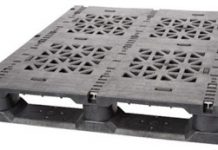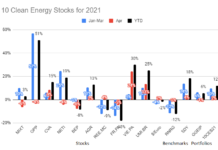So you remember CFLs, right? The curlicue bulbs? The time they took to go on? The harsh light?
 Despite their drawbacks, compact fluorescents have sold fairly well in the US. They save customers money. Utilities promoted and subsidized CFLs, particularly in California. Walmart (NYSE:WMT) pledged to sell 100 million of them. Time magazine put one on the cover. By 2012, CFLs represented 27 percent of the bulbs installed in the over 3 billion medium screw-based sockets in the United States, according to a Navigant study quoted by NRDC. Other researchers put the number lower, about 20 percent, says IMS Research.
Despite their drawbacks, compact fluorescents have sold fairly well in the US. They save customers money. Utilities promoted and subsidized CFLs, particularly in California. Walmart (NYSE:WMT) pledged to sell 100 million of them. Time magazine put one on the cover. By 2012, CFLs represented 27 percent of the bulbs installed in the over 3 billion medium screw-based sockets in the United States, according to a Navigant study quoted by NRDC. Other researchers put the number lower, about 20 percent, says IMS Research.
The trouble is, no one likes CFLs very much. Some CFLs took three minutes to turn on, for goodness sake! Consumers were dissatisfied with the quality of the light, and rightfully so, as even advocates of CFLs acknowledged.
Which is why Cree, Inc. (NASD:CREE), a leading manufacturer of LED bulbs, is taking direct aim at CFLs, as well as old-fashioned incandescents, as it tries to win mainstream America over to LEDs–which, by most accounts, are a superior alternative to CFLs and incandescents.
Can CREE and other leading manufacturers of LEDS-they include Osram Sylvania, Phillips Lumileds (NYSE:PHG), and General Electric(NYSE:GE)–persuade Americans to change their lightbulbs, yet again? The stakes are high, for consumers and for the environment.
Recently, I asked Mike Watson, Cree’s vice president of marketing, about the company’s approach.
He told me that Cree will try to sell LEDS by telling people that they last longer and cost less than CFLs and incandescents, without requiring any sacrifice when it comes to performance.
“The whole point of the CREE LED bulb is to mimic incandescent light as much as we can,” Watson told me.
“CFL presented consumers with a lot of frustrations and tradeoffs,” he said. “As energy efficient as they may be, you paid for it by not having the light you want.”
As for incandescents, he said, they are like throwing money out the window. It’s time to bury that technology, as this Cree TV commercial suggests.
One thing that Cree will not do is focus on the environmental benefits of its bulbs.
“We don’t market ourselves as a green company, even though we really are,” he said. “The term ‘green’ to a consumer is as much political as anything else.”
“The economics come first,” he said.
He’s probably smart to shy away from green labels. As National Geographic reported recently, when academics at the Wharton School and Duke surveyed consumers about energy efficiency, they found that conservatives turned away from the bulbs when they were labeled with a “protect the environment” sticker. Crazy.
The fact is, LEDs are the environmentally-preferable choice. The U.S. Department of Energy’s Pacific Northwest National Laboratory (PNNL) studied LEDs, CFLs and incandescents, looking at their ”total environmental impact, including the energy and natural resources needed to manufacture, transport, operate and dispose of light bulbs.” Its report concluded:
Today’s light-emitting diode light bulbs have a slight environmental edge over compact fluorescent lamps. And that gap is expected to grow significantly as technology and manufacturing methods improve in the next five years.
But while LEDS make economic and environmental sense, persuading consumers to try something new and different–again–won’t be easy. Sticker shock remains an issue. But a Cree 9.5-Watt dimmable LED bulb, which is the equivalent of a 60-watt incandescent, retails for $12.97 at Home Depot. A 6-pack of GE 60-watt incandescent bulbs sells for $3.97.
Of course, they are simply not equivalent products. LED bulbs use 80% or more less energy and last 25 times longer than incandescents, as CREE’s marketing message says:
Most experts believe that CREE and the other leading LED makers will eventually be able to overcome those obstacles and drive sales. Prices of the bulbs are falling–some sell for less than $10–and the light quality is fine. CREE sent me a few sample bulbs a few weeks ago and I’m satisfied, so far. They turn on instantly, and they are dimmable. Consumer Reports said recently that its initial tests of Cree and Phillips bulbs priced between $13 and $15 showed promising results.
Earlier this year, Gerard Wynn, a market analyst for Reuters, wrote:
The LED lighting industry is set to dominate the global market more than a century after its discovery, benefitting from a widespread ban of conventional incandescent bulbs and as the market share of competing green replacements fade.
Let’s hope he’s right.
DISCLOSURE: None.
ABOUT THE AUTHOR: Marc Gunther is editor at large of Guardian Sustainable Business US and a contributor at FORTUNE magazine and a blogger at marcgunther.com. Marc is the author or co-author of four books, including Faith and Fortune: How Compassionate Capitalism is Transforming American Business (Crown 2004). His newest book, Suck It Up: How capturing carbon from the air can help solve the climate crisis, has been published as an Amazon Kindle Single. You can buy it here for $1.99.









